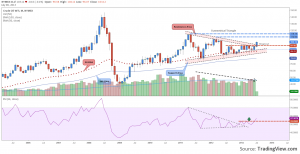London Gold Market Report
from Adrian Ash
BullionVault
Monday, 8 July 08:00 EST
The GOLD PRICE ticked higher in London trade Monday morning, rising from its lowest weekly close in three years as Asian stock markets fell but Eurozone shares jumped over 2% higher.
Major government bonds ticked higher, easing interest rates down, while the US Dollar held steady after last week’s strong gains on the currency market.
A Wall Street Journal survey says the majority of economists think that Friday’s jobs data mean the US Federal Reserve will start reducing its quantitative easing program as early as September.
Silver bullion today ticked back above $19.22 per ounce, regaining half of last week’s 3.6% drop.
“Unlike the April rout [in gold prices],” says the latest monthly report from brokers INTL FCStone, “which drew out a slew of buyers, we are not seeing the same type of reaction this time around.
“[This suggests] the complex remains vulnerable from the physical side as well.”
The gold price is now “near the lows of the year,” says David Govett at fellow brokers Marex Spectron, but “For the moment at least, I do think we have done enough.
“I now think we are moving into the good old summer lull. Overall direction will be sideways.”
New curbs on gold bullion imports to India – where the Hindu calendar’s Chaturmas will now keep gold demand low until September – cut legal inflows by 81% in June from May’s record high of 162 tonnes, a government official told journalists today.
Sales are however “expected to go up again” because of the gold price, the official added.
“India’s gold imports will be somewhat the same or slightly more for July,” agrees Commtrendz Research’s Gnanasekar Thiagarajan, quoted by Reuters, “as some bargain hunting interest was seen.”
The Indian Rupee fell Monday to fresh all-time lows against the Dollar, reducing the gold price discount for buyers in the world’s No.1 consumer market.
“The [Reserve Bank of India] is definitely concerned about Rupee weakness,” says Nick Verdi at Barclays in Singapore.
Rather than intervening to support the Rupee with cash trades, however, “It will look to combat this mostly through verbal intervention,” he reckons.
Meantime in Egypt, the 12th largest private gold consumer in 2012, the main stock market sank almost 3% as fighting continued after more than 40 supporters of ousted president Morsi were killed at the weekend.
“Tensions in Egypt put pressure on local [gold] demand,” says German refining group Umicore in a quarterly trading update, “as some retailers started to think of closing their shops for fears of looting.”
With the gold price now 36% below its Dollar record of September 2011, Russia’s state treasury Gokhran – the official trader of gems and precious metals – is preparing to buy gold on the domestic market after a two-year gap, Reuters reports.
Invited to sell gold onto the open market when prices neared their 2011 peak, “We were forbidden to buy gold directly [from Russian miners],” a source tells the newswire.
“If we receive permission, we will be happy to start buying gold again,” the source added.
Russia’s central has continued to acquire gold bullion for its own reserves, adding more than 78 tonnes in the last 12 months and rising to 7th place amongst the largest nation-state holders.
Western Europe’s central banks, in contrast, have so far sold only 4.3 tonnes of the 400-tonne limit set by their Central Bank Gold Agreement this year.
Running from September, the agreement was first signed in 1999 to cap erratic sales by European governments as the gold price sank to three decade lows.
“Gold prices are going to generally drop down throughout the year,” reckons Société Générale’s head of commodities research, Michael Haigh, speaking today at a media briefing in Singapore.
Pointing to possible “price hedging” by gold-mining producers, “They’ll start selling into the market,” Haigh warned, “which puts more downward pressure on gold prices.”
SocGen’s outlook for gold is in stark contrast to its broader view of the commodities “super cycle”, which Haigh believes will continue for another 15-20 years thanks to “population and urbanization” in emerging Asian economies.
“But it’s not going to be an upward price for all.”
Forecast by many analysts to overtake India as the world’s No.1 gold consumer in 2013, China imported its second greatest monthly volume of gold bullion through Hong Kong in May, data showed last week.
Through the first 6 months of the year, separate data showed Friday, gold bullion deliveries made to traders using the Shanghai Gold Exchange totalled 1058 tonnes.
That was precisely 50% of the 2012 full-year total.
The plunging gold price however saw shares in Zijin Mining – the largest gold miner in world No.1 mining nation China – today drop 11% after it forecast “very poor results, below expectations.”
“The fact that the gold price has fallen is actually going to be very healthy,” said gold-mining fund manager Evy Hambro of Blackrock to Bloomberg last week.
“We need to see costs taken out of the industry; we need to see the companies stop producing the ounces that don’t make money and focusing on the ones that do.”
Adrian Ash
BullionVault
Gold price chart, no delay | Buy gold online
Adrian Ash is head of research at BullionVault, the secure, low-cost gold and silver market for private investors online, where you can buy gold and silver in Zurich, Switzerland for just 0.5% commission.
(c) BullionVault 2013
Please Note: This article is to inform your thinking, not lead it. Only you can decide the best place for your money, and any decision you make will put your money at risk. Information or data included here may have already been overtaken by events – and must be verified elsewhere – should you choose to act on it.




